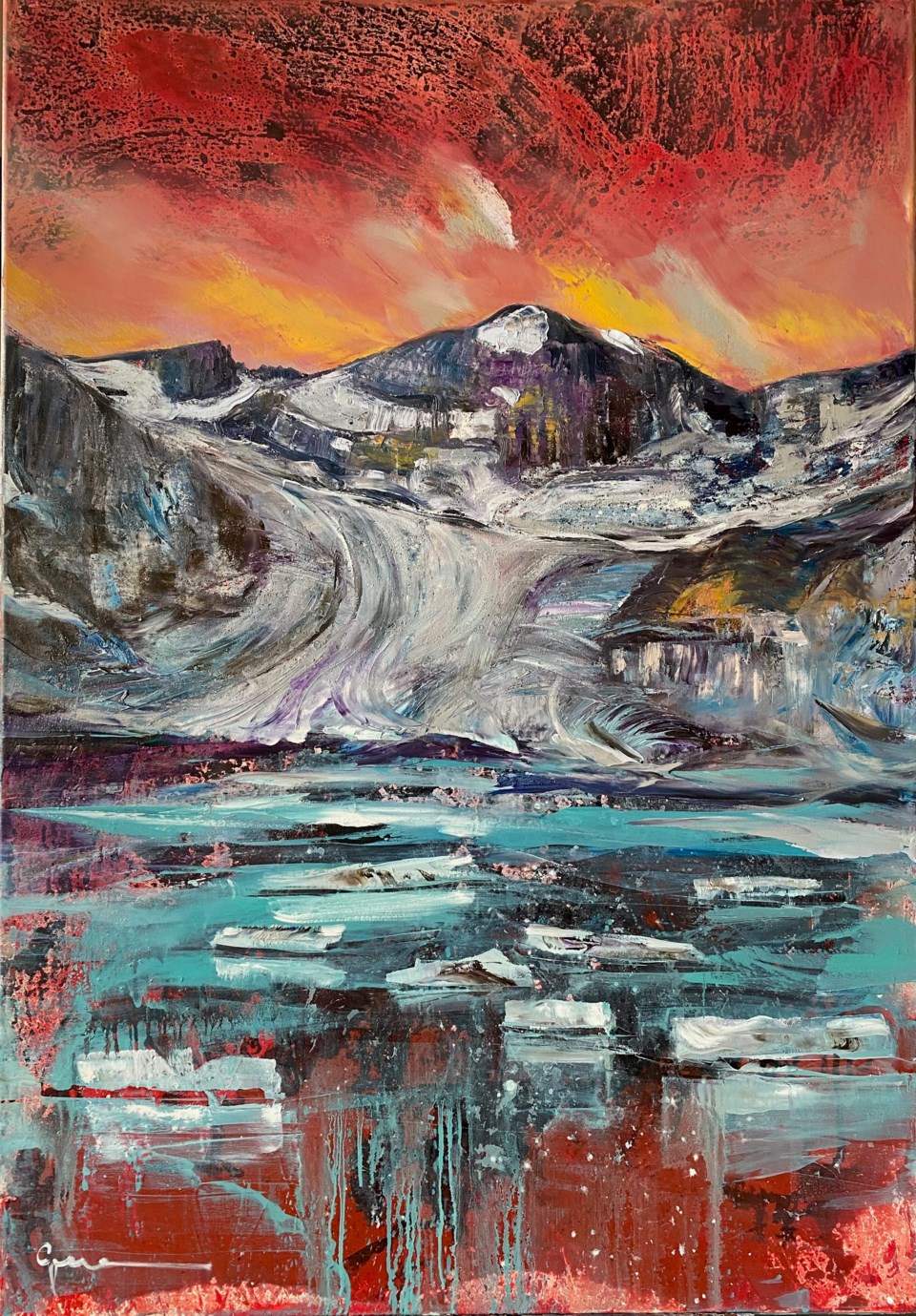BANFF – The Bow Valley is blessed with an abundance of nature and beauty, but with climate change, changes are already being felt and seen in the valley.
Environmental issues are the central focus of new exhibitions at the Whyte Museum of the Canadian Rockies, Cold Regions Warming and Contemporary Consciousness.
Cold Regions Warming is a collaboration between artist Gennadiy Ivanov, Global Water Futures and scientists John Pomeroy and Trevor Davies. The exhibition combines paintings, drawings and videos that depict locations in Canada like the Bow Valley, where climate change is impacting rivers, lakes and glaciers.
“Ivanov is a remarkable artist. He has a field technique, a lot of these trips are in winter, and even in -20 Celsius he can create pastels in the field,” said Pomeroy. “He will go back to the studio with these impressions and recordings of what we said and create large oils that remind me of the grand European masters.”
The experience of going to various sites with an artist is something Pomeroy enjoys and feels helps get the message of climate change out in a new way.
“It is a fascinating and exciting experience. It is great to go out with an artist who turns these landscapes and research sites and places where we generate numbers and graphs and tables, into something that is profoundly beautiful,” Pomeroy said. “It communicates the science in a different way and it gets the message to people in their guts about what is going on, and the changes going on in the Rockies.”
Anne Ewen, chief curator of art and heritage at the Whyte Museum, views the blending of art and science as something that improves the overall message of both.
“We were really fascinated with the notion that scientists were working with an artist,” Ewen said. “The exhibition would have this artistic impact, but also this scientific cohesion and message.”
Adding in history through the museum, the exhibition provides an extremely thorough analysis of the issues facing the Bow Valley’s landscape. This is also not the first time such an exhibition has been held at the museum. Previous exhibitions have included Water and Landscapes Reconstructed.
“One of the cool things for the Whyte Museum will be the marriage between the science and the art, but also the programming around this exhibition,” Ewen said. “We will have a panel discussion with the scientists and artists. We are really excited about this.”
The use of art and science has been taken to the United Nations by Pomeroy, due to how effective it is as a message conveyor together.
“We noticed that people come to the art exhibits who may not attend a science lecture or read a scientific article,” Pomeroy said. “I recently gave a presentation to the UN General Assembly and I used the facts and figures and the art to convey the message.”
Due to the scope of climate change, it is important to reach people emotionally and intellectually.
“The problem is so big and so profound,” Pomeroy said.
The other exhibition at the museum, Contemporary Consciousness, features the work of Joshua Jensen-Nagle and Alexandra Ewen. The images of Jensen-Nagle work to remind the viewer of the personal experience of enjoying the ocean, while considering the impact of a day of overpopulation and waste in the ocean and its shores.
Ewen takes the items that wash up on the beaches of Tofino, B.C., connects them with the culinary creativity of Japanese culture, by reconstructing the garbage into formed sushi meals, edible in scale and served to order.
Overall, the entire goal of the exhibitions are to make people think differently and to consider their impact on the natural environment worldwide.
“I hope it will convey that we live in a time of great transition and the Rockies we view as static are changing so quickly into a different climate and eco-system,” Pomeroy said. “We are moving towards a deglaciated future. We are moving to a future where we don’t have the mountain snowpacks for much of the year.”
Ewen said he hopes people think about the impact they have on water and the landscape “to really think about what they are doing and how they are doing it, and maybe making a few changes.”




